Family 4×4 proves its off- and on-road capabilities
1st February 2024
Farmers Guide has been putting the Subaru Forester 4×4 estate through its paces, to find out how the latest hybrid drive-line set-up copes with typical farm use. David Williams reports.
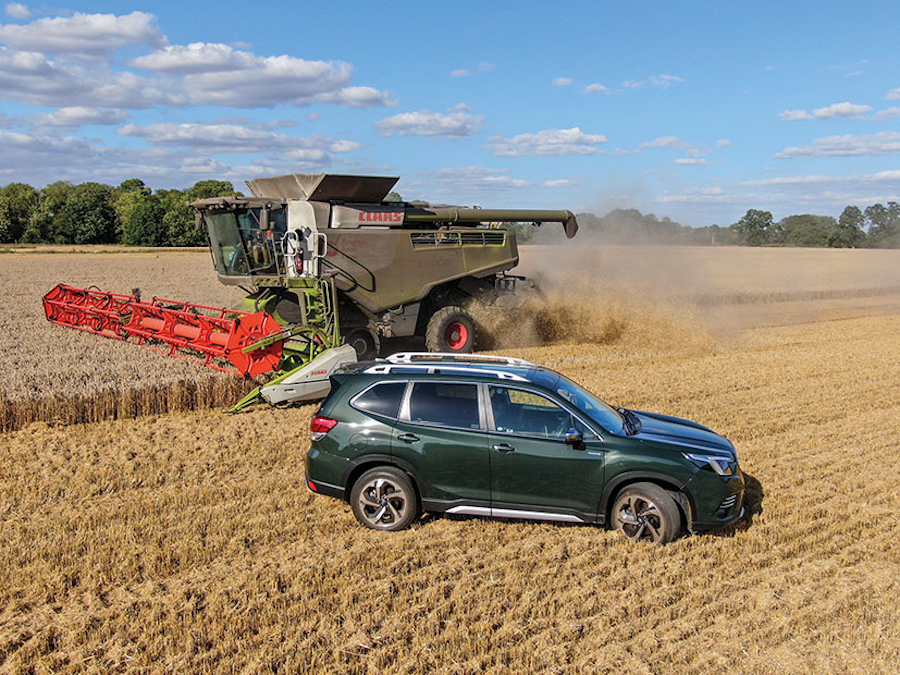
Subaru earned a great reputation for reliability and practicality with its popular 4wd pick-ups in the 1980s and 1990s, when most competitors offered only 2wd. No modern equivalent is offered, but the Subaru Forester 4×4 estate has been well accepted by UK farmers as a versatile option for farm and family transport, with good off-road capability as well as on-road refinement and comfort.
The latest version, announced in late 2022 and celebrating 25 years since the first Forester entered production, is a self-charging hybrid using a petrol engine together with a battery-powered motor for propulsion.
Boxer layout retained
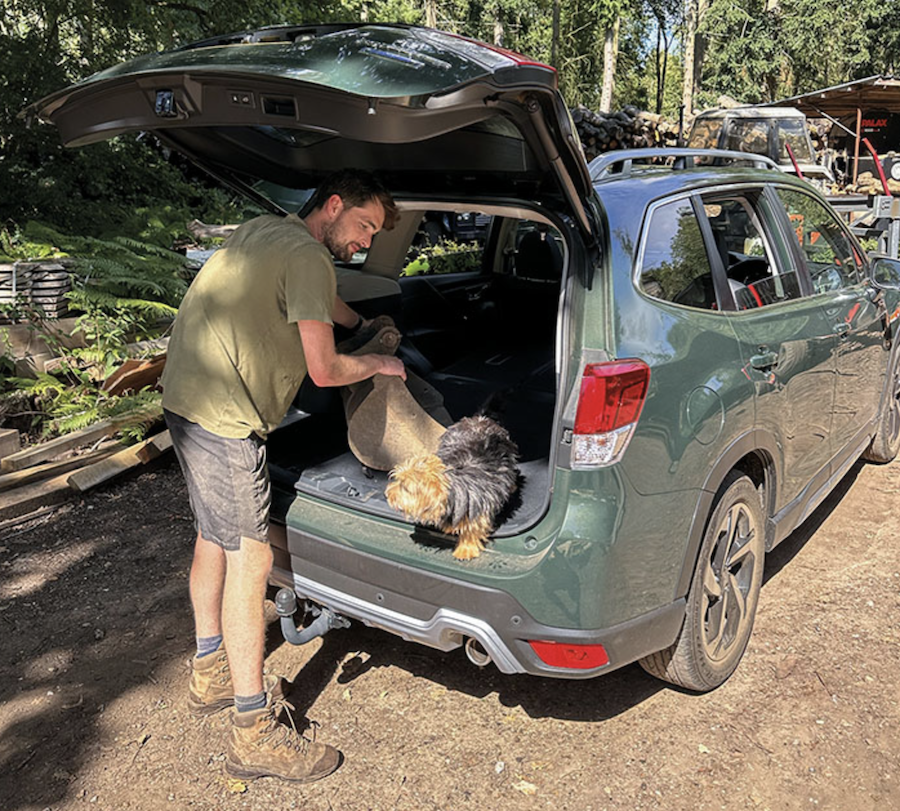
The 2.0-litre petrol engine retains Subaru’s boxer layout, with four horizontally opposed cylinders. The e-Boxer power system automatically adjusts the power split between the petrol engine and electric motor, using three driving modes – engine drive, motor drive and motor-assist driving. From standstill and at low speeds the electric motor powers the vehicle. At medium speeds, combined power from the engine and motor provides smooth and fuel-efficient acceleration, and at higher speeds the petrol engine drives the vehicle while also recharging the battery.
The S-AWD transmission provides constant 4wd with torque control to each wheel for improved handling and cornering. The driver can select between standard Intelligent, and Sport modes which tune the throttle response to suit the required driving style.
Off-road
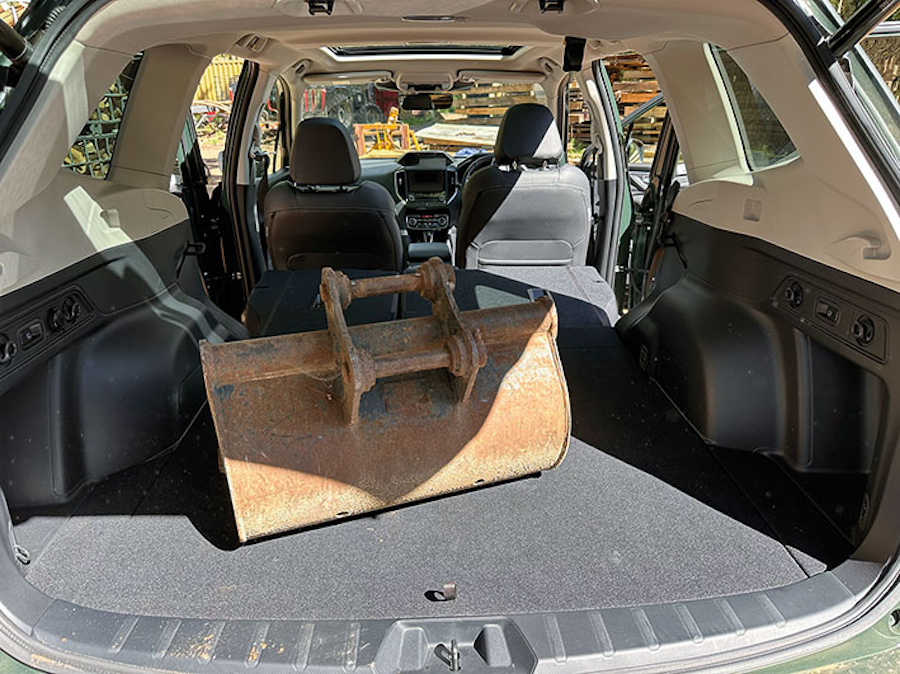
At 220mm, the ground clearance is impressive for a vehicle of this type, and the underside comes with plenty of guarding to protect critical components from damage. Driver aids include X-Mode, which allows quick selection of pre-programmed operating characteristics for the engine and transmission to suit the driving environment.
Modes are selected by a rotary switch and include: Snow/Dirt; Deep Snow/Mud; and Normal. The week-long test coincided with several days of very wet weather, which provided a great opportunity to find out how the car performed in muddy, slippery conditions. A farm track with deep, wide ruts created by tractors with heavy trailers was a challenge. With careful attention to the Subaru’s position relative to the ruts, it completed the short journey in ‘Normal’ drive mode without becoming stuck, but with Deep Snow/Mud mode selected the performance was improved.
More effective use was made of the available grip from the Bridgestone Dueler HP Sport 225/55-18 tyres and the car responded better to throttle and steering inputs. The off-road mode improved the car’s capability and reduced demands on the driver.
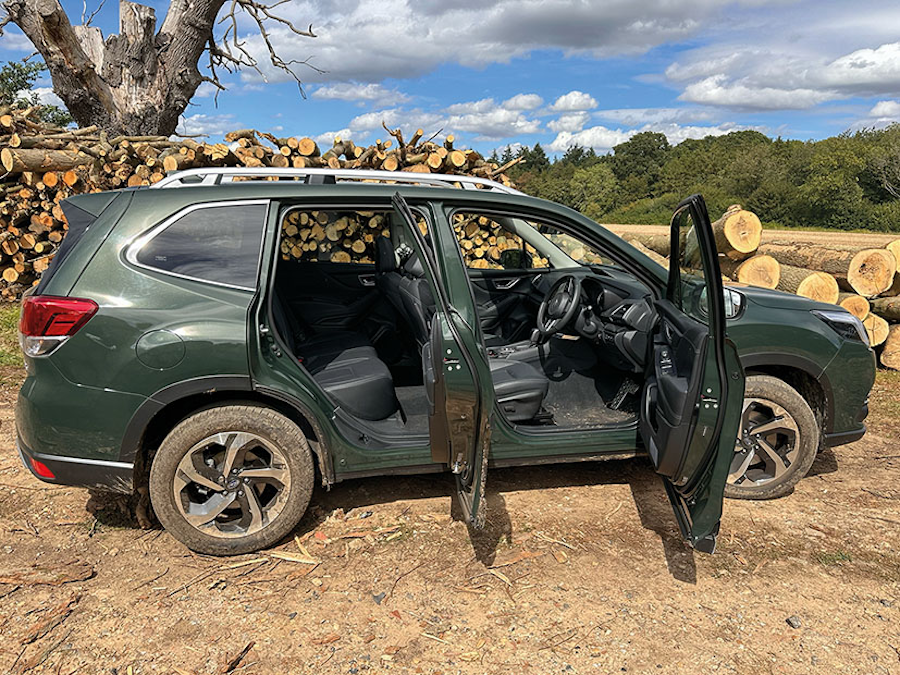
The Subaru has MacPherson strut front suspension and double wishbones at the rear. The set up ensures excellent ride quality and comfort on- and off-road. In drier conditions, travel across rough fields and farm tracks was very comfortable.
Hybrid drive
The hybrid drive system works best when the battery is fully charged as the system can make most effective use of the electric motor to supplement the petrol engine. For manoeuvring in tight spaces or negotiating more extreme off-road conditions, the electric motor provides the most progressive control at lower speeds. However, because the Subaru is a hybrid, the battery operating range is quite short, so after travelling for a short time off-road the battery indicator displays empty and the petrol engine is then relied on to provide all the power. The car remains easy to drive and very controllable, but it isn’t quite as refined as when only the electric motor is used.

On-road, the hybrid system is barely noticeable. Pulling away gently from standstill, the electric motor provides almost silent motion until the petrol engine cuts in. More aggressive acceleration engages the engine and motor simultaneously for maximum power and the performance is quite sporty. Whenever the car is coasting or decelerating, the self-charging system replenishes the battery, and after relatively short road journeys the battery indicator displays a full charge.
The hybrid system is designed to reduce exhaust emissions, fuel consumption and noise levels. It works well, and during the test week mix of short road journeys and off-road driving we achieved 37.4 miles per gallon average fuel consumption.
Driving
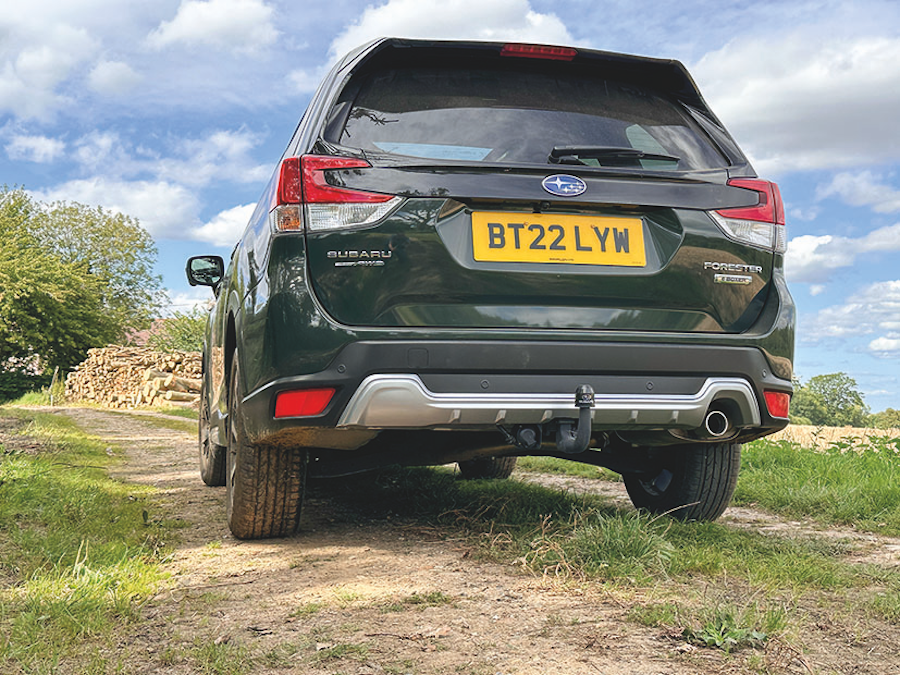
The Subaru has quite a sporty feel. The seats are comfortable and well shaped; the steering wheel is small, comfortably padded and heated. The transmission has automatic and manual operating modes. Pushing the selector lever to the right allows manual gear changes using paddles at the rear of the steering wheel.
The front console has two digital displays. The smaller top display is dedicated almost entirely to monitoring the battery condition and charge state, whereas the larger main 8in screen is used for media, and to display views from a selection of cameras. Pushing the ‘View’ button beside the off-road mode switch provides images from an off-side camera to cover blind spots, especially useful for manoeuvring in the farmyard or during off-roading. The view from the reversing camera is excellent.
Comfortable and practical
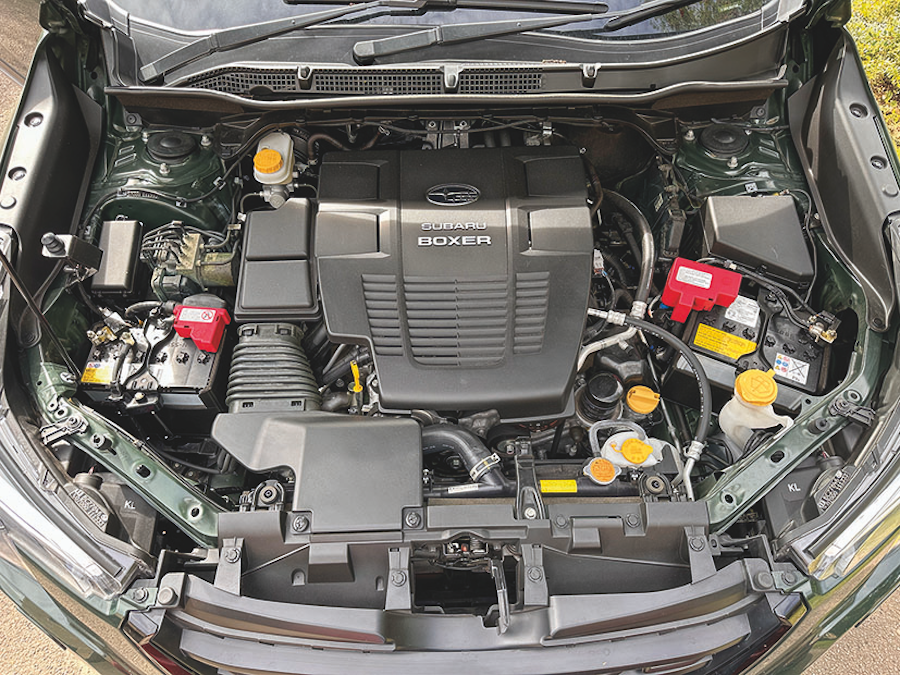
The test car had a panoramic sunroof with an electric operated inner cover. The seats are full leather which is practical and comfortable. The front seats have electric adjustment and heating. There is plenty of legroom for back seat passengers, even with the front seats in the rearmost position.
Storage at the front includes a large glovebox, although the extremely thick instruction manuals take up most of the space. There is a generous sized central compartment between the front seats with a removable inner tray for smaller items. A small tray in front of the gear selector provides space for odds and ends, and there is plenty of room for drink bottles in the centre console and door pockets.
Storage at the rear includes pockets in the back of the front seats, small pockets in the doors and two drink bottle holders. The rear seats are heated. They have a 70/30 split and fold almost completely flat to maximise boot load space. The rear doors open to almost 90 degrees, making it easy to load goods from the side, and for passengers to get in and out.
Load carrying
Load capacity is impressive. Loading height through the rear door is 70cm from the ground, and the opening accommodates bulky items up to 81cm high, and of 130cm width at the widest point, and 120cm wide at floor level. The internal load area is from 104cm wide at the narrowest point and 110cm between the wheel arches. Items up to 170cm long can be transported even with the front seats in the rearmost position.
A towbar is optional and towing capacity is 1,870kg.
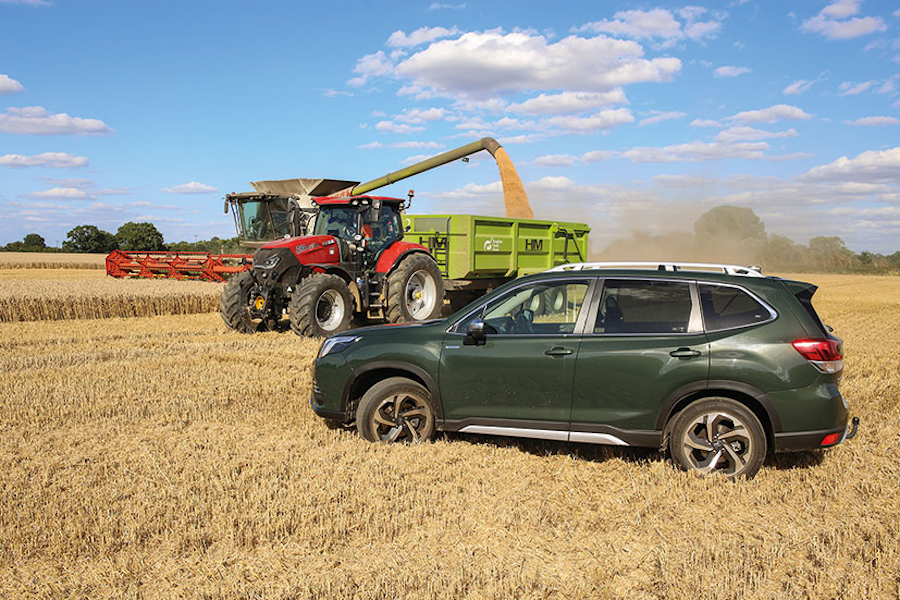
Verdict
The Subaru Forester is a practical, multi-purpose 4×4 car, capable of travelling across quite demanding off-road terrain, yet comfortable enough for long journeys with five people on board. It comes with a three-year, 60,000-mile manufacturer warranty. The top-specification 2.0i XE Premium Lineartronic tested costs from £40,990 on the road, and the base 2.0i XE Lineartronic is £3,000 less, with an identical drivetrain but lacking some of the equipment including the panoramic sunroof and with less distinctive alloy wheels.
Read more machinery news here
